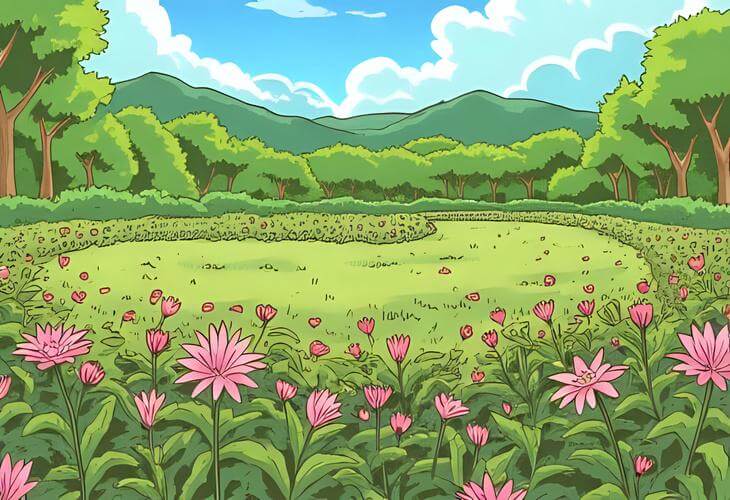
Bee balm (Monarda spp.) is a vibrant and aromatic perennial native to North America. Known for its showy, shaggy blossoms and fragrant leaves, bee balm lights up gardens with firework-like blooms in shades of red, pink, lavender, and white. With a strong presence in both ornamental and pollinator gardens, this plant is popular with gardeners, herbalists, and bees alike.
Often called bergamot (not to be confused with the citrus) or Oswego tea, bee balm has a long history of medicinal and culinary use, particularly among Indigenous peoples. Today, it’s a staple in native plant landscapes and pollinator pathways, offering bold color and abundant nectar through the peak of summer.
Soil (pH) Requirements
Bee balm thrives in moist, rich, well-draining soil with a pH range between 6.0 and 7.5. It adapts to a variety of soils but performs best when the soil retains moisture without becoming soggy.
Soil Tips
- Add compost or leaf mold to improve fertility and structure.
- Ensure soil doesn’t dry out too quickly—especially important in hot climates.
- Avoid overly compacted soils, which can restrict root development.
Sun Requirements
Bee balm grows well in full sun to partial shade. For best flowering, aim for at least six hours of direct sunlight daily. In hot southern regions, some afternoon shade can prevent leaf scorch and prolong bloom time.
Sunlight Preferences
Full sun promotes robust blooming and stronger stems.
Partial shade may reduce flowering slightly but can extend the plant’s lifespan in warm areas.
Watering Requirements
This plant loves consistent moisture and appreciates a bit more water than many other perennials. It does not tolerate drought well, especially during active growth and flowering.
Watering Guidelines
- Water deeply one to two times per week, depending on weather.
- Keep soil evenly moist but not soggy.
- Mulch around the base to conserve moisture and prevent weeds.
Best Plant Hardiness Zones
Bee balm is a hardy perennial in USDA Zones 3–9, depending on the variety. It overwinters easily in most regions and returns reliably each Spring.
Regional Notes
In Zones 3–5, choose more cold-hardy cultivars and mulch in late Fall.
In humid regions, space plants for air circulation to reduce powdery mildew risk.
Bee Balm’s Popularity and Pollinator Power
Bee balm is a standout in pollinator gardens for good reason—it’s a nectar-rich magnet for beneficial insects and birds, especially during midsummer when many other blooms are winding down.
Why Gardeners Love It
- Long blooming period (midsummer through early Fall)
- Bold color for flower beds, borders, and cottage gardens
- Fragrant leaves (minty, citrusy) used for teas and herbal remedies
- Resistant to deer and tolerant of clay or loamy soils
Favorite Pollinators Attracted
- Hummingbirds, especially to red-flowered types
- Bumblebees, drawn to large open blooms
- Honeybees, foraging during the heat of the day
- Butterflies, including swallowtails and fritillaries
- Hoverflies, which help control aphids and visit bee balm for nectar
Bee balm produces an abundance of nectar and serves as a mid-to-late Summer banquet for wildlife, making it a critical anchor in seasonal pollinator plantings.
Five Spectacular Varieties of Bee Balm
Jacob Cline Bee Balm
Jacob Cline is a tall and vigorous red-flowering cultivar known for its powdery mildew resistance and bold presence. Reaching up to 4 feet, it’s a hummingbird magnet and works well at the back of borders.
Best Uses
- Pollinator borders and wildlife gardens
- Red-themed flower beds
- Cut flower arrangements with bold impact
Pollinator Highlight: Its vivid scarlet blooms are irresistible to hummingbirds and large native bees.
Zones: 4–9
Raspberry Wine Bee Balm
This variety boasts rich raspberry-pink flowers and a more compact, bushy habit. It’s ideal for mid-border planting and blooms for weeks during the height of summer.
Best Uses
- Cottage-style gardens
- Mixed perennial beds
- Floral displays with pink or wine tones
Pollinator Highlight: Draws a steady stream of honeybees and butterflies—particularly skippers and hairstreaks.
Zones: 4–9
Petite Delight Bee Balm
A true dwarf cultivar, Petite Delight grows just 10–12 inches tall and sports lavender-pink blooms. It’s a smart choice for containers or the front of flower beds.
Best Uses
- Small-space gardens or urban landscapes
- Containers and balcony planters
- Edging paths and herb gardens
Pollinator Highlight: Despite its smaller size, its flowers still attract hoverflies and solitary bees, especially in city gardens.
Zones: 3–9
Marshall’s Delight Bee Balm
Known for its striking medium pink flowers and robust resistance to powdery mildew, this variety grows 3–4 feet tall and makes a showy midsummer display.
Best Uses
- Pollinator gardens in humid climates
- Cut flower gardens
- Naturalistic or prairie-style plantings
Pollinator Highlight: Loved by butterflies and native bees, and blooms are sturdy enough to support multiple visitors at once.
Zones: 3–9
Wild Bergamot
A true native species, wild bergamot features lavender-purple flowers and a delightfully herbal fragrance. It’s a bit leggier than cultivated types but fits beautifully in native plantings and meadows.
Best Uses
- Native restoration and pollinator habitats
- Low-maintenance wildflower gardens
- Tea gardens
Pollinator Highlight: A top draw for native bumblebees, honeybees, and butterflies, especially in prairie ecosystems.
Zones: 3–9


 Previous
Previous

